Vertical Extension of Street
Ssamziegil
The building named Ssamziegil is as an amalgam of the name of the owner of the building, Ssamzie Co., and the Korean word ‘gil’ meaning Street. The building is located in the art-shop district of Insa-dong where the fabric and scale of old Seoul still remains. Although most of the buildings in Insa-dong are fairly new, people still find the old streets and alleyways that are filled with galleries and antique shops bring a sense of the quaint and nostalgic. Because of the peculiar condition of this area, the site was classified as a special building zone that required detailed design regulations regarding the height of the building, the size of the courtyard and more.
One reason Insa-dong is usually flooded with people is because of the various exhibitions and collectibles that are frequently on display in the area. However the main charm of Insa-dong is that it’s one of few remaining pedestrian-friendly streets in Seoul. During weekends the street turns into a ‘car-free zone,’ bringing a swarming pool of merchants, shoppers, and sight-seers into the tiny district. The main spine of Insa-dong—which connects the whole area with a web of minor paths—provided an ideal space for ‘people meeting people.’ This function played a major role in the inspiration to develop a building that maintains characteristics of the street itself, as more of a vertical extension of Insa-dong streets and alleyways than a building proper.
The building plan was quite simple. To maintain a street-like character, the building has 5 entrances into the courtyard from each side. The courtyard works not only as a meeting place but also a rest area. Different paths into the building lead people to the large deck on the second floor through the grand stairs which are used simultaneously as seats, for shops and as part of an arena. From the deck, one can follow the gently sloping ramp(1/20-1/25) and browse the shops alongside while overlooking Insa-dong and the courtyard. As the horizontal streets of Insa-dong ‘communicate’ with their vertical expansions, it encourages the public to communicate with vendors and between themselves. In order for this new building to be ‘branded’ in the old fabric, all materials that did not blend into the context were removed, limiting the selection to those that were either natural substances or ones that kept their origin colors. Today the ‘street-building’ named Ssamziegil works wonderfully as a piece of the local urban fabric while continuing to fulfill a variety of functions as well.
2004
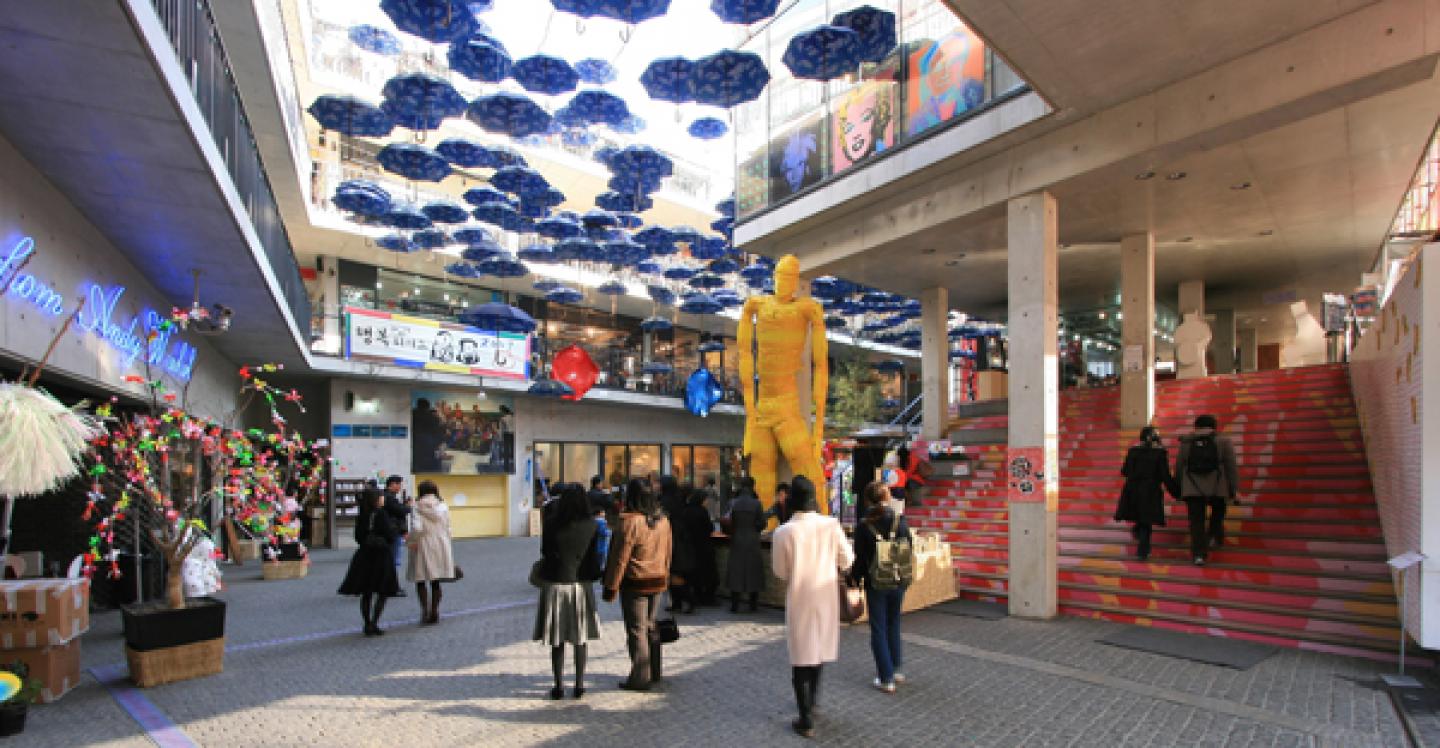

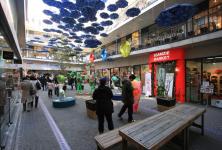
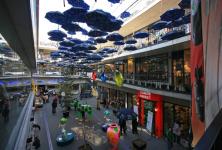
.jpg)
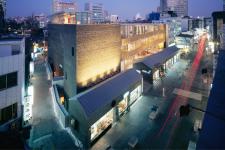
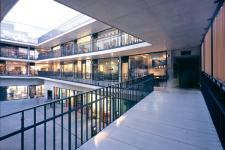
.jpg)
.jpg)

